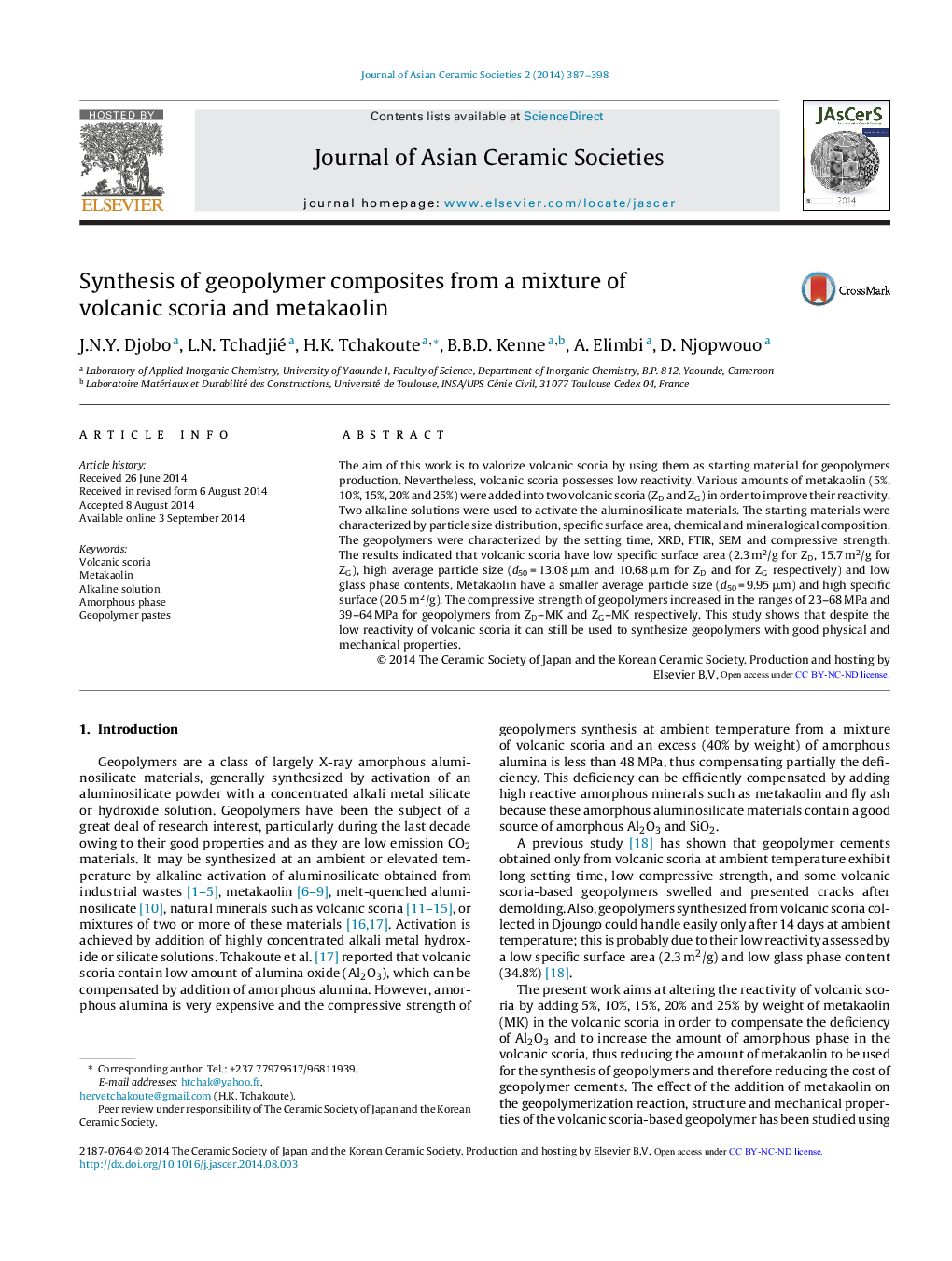| Article ID | Journal | Published Year | Pages | File Type |
|---|---|---|---|---|
| 1473352 | Journal of Asian Ceramic Societies | 2014 | 12 Pages |
The aim of this work is to valorize volcanic scoria by using them as starting material for geopolymers production. Nevertheless, volcanic scoria possesses low reactivity. Various amounts of metakaolin (5%, 10%, 15%, 20% and 25%) were added into two volcanic scoria (ZD and ZG) in order to improve their reactivity. Two alkaline solutions were used to activate the aluminosilicate materials. The starting materials were characterized by particle size distribution, specific surface area, chemical and mineralogical composition. The geopolymers were characterized by the setting time, XRD, FTIR, SEM and compressive strength. The results indicated that volcanic scoria have low specific surface area (2.3 m2/g for ZD, 15.7 m2/g for ZG), high average particle size (d50 = 13.08 μm and 10.68 μm for ZD and for ZG respectively) and low glass phase contents. Metakaolin have a smaller average particle size (d50 = 9.95 μm) and high specific surface (20.5 m2/g). The compressive strength of geopolymers increased in the ranges of 23–68 MPa and 39–64 MPa for geopolymers from ZD–MK and ZG–MK respectively. This study shows that despite the low reactivity of volcanic scoria it can still be used to synthesize geopolymers with good physical and mechanical properties.
